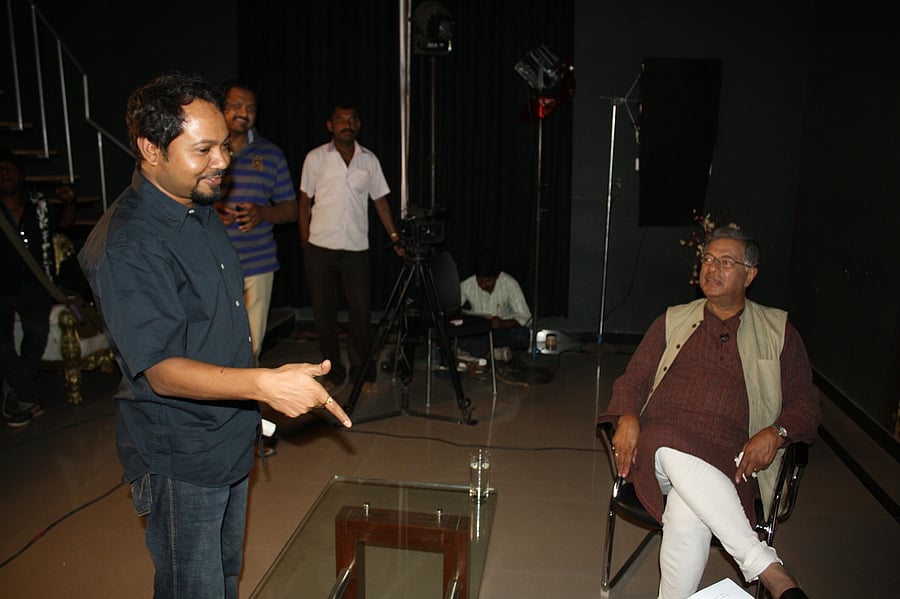
Film directors who have collaborated with the state government’s Information Department are upset their films are not easily available for public viewing. Documentaries and biopics must be put out on YouTube and other online platforms for free viewing, they say.
K M Chaitanya, director of bio-documentary on Girish Karnad and Avalokana (programme on culture, history and science in Karnataka), says documentaries are made with public funding, and should be easy for the public to view.
Organisations such as Sahitya Akademi, Sangeet Natak Akademi, Films Division, and the Karnataka government’s Information Department make documentaries that deserve exposure, Chaitanya told Metrolife.
In an earlier era, organisations preserved documentaries on film and tape. “Later, they began to store the films digitally. Now that online platforms are available, the government should make documentaries easily and freely accessible to everyone,” he says.
Popular director Abhaya Simha seconds Chaitanya’s views. “Doordarshan and All India Radio have some wonderful recordings of master musicians and produce documentary films on great personalities. But these are not accessible to the public. So the basic purpose is defeated,” he says. He believes the best way to preserve knowledge is by widely distributing it. With the technology available today, the films should be released online for non-commercial use, he says. “Creative commons would be a great approach,” says Abhaya, who has made a film on U R Ananthamurthy. He blames the country’s “poor sense of history” for the indifference.
Chaitanya is concerned about the delay in making documentaries accessible. “Some of these institutions might feel YouTube benefits commercially from such material. If that is the case, then the government should have its own online video platform,” he suggests.
Another alternative is to tie up with YouTube and run a channel. “What is not understandable is how proprietary some of these institutions behave when you ask them for material. These are not private institutions. The documentaries are made with taxpayer’s money,” he says.
Director Maya Chandra, founder of film production company MAYA, has made many documentaries for the government. The government has slowly started making public some of her work, but the process should be faster, she says.
“Putting films out in the public domain is not only an acknowledgement of the hard work, time and resources put in by the filmmaker, but it also inspires young minds to venture into the art of filmmaking,” says Maya.
Biopics should be accessible at all times and not just on specific
occasions. “It would be nice to have an annual film festival where these documentaries and biopics are screened. This also enhances the work done by the Information Department,” she says.
N S Shankar, journalist and filmmaker, who has made a couple of documentaries for the government, calls for a more systematic and disciplined approach towards collecting, preserving and showing documentaries. “I began my work with the government in 1994 and my recent work was in 2016. It is imperative to preserve the negatives of the pre-digital era films. Only some films, like the ones on Bendre and DVG, have been digitised and preserved. A lot more needs to be done,” he says. Shankar had directed feature films ‘Ulta Palta’ , ‘Wrong Number’ and ‘Jootata.’
Public archives gaining momentum
Film maker Abhaya Simha says digital archives are throwing open their doors, and Karnataka should learn from them.
“Archives such as British Pathé, Korean Classic Film and many more are now open. On archive.org, you find an unbelievable amount of books, films, video clips, audio clips and more for absolutely free under Creative Commons. We should join this movement and set knowledge free,” he says.
Omshivaprakash, NAM Ismail and Abhaya Simha have started an initiative called Sanchi Foundation, with a channel on YouTube, to promote classical theatre forms. “Sanchaya (https://sanchaya.org) is another portal doing amazing work on releasing books and text forms freely on the Internet. More people have to join this movement,” he says.
Favouring a few
A senior officer with the Information Department says the government has started putting out its documentaries in the public domain but red tape exists.
Funds are released generously and films are being made but not all are released on public platforms, he says.
“The government favours some filmmakers and repeatedly gives them film projects. Other talented and deserving filmmakers feel sidelined. This attitude should change,” he says.
Who makes docufilms?
Info Dept, Karnataka government
Sahitya Akademi, Delhi
Sangeet Natak Akademi, Delhi
Films Division, Mumbai
Doordarshan
Karnataka Chalanachitra Academy
150 docufilms uploaded, more coming up
The Karnataka government’s Information Department says 150 documentaries, including those on poets Kuvempu and Bendre, are already up on YouTube.
“This is being done in a phased manner. We have more than 700 documentaries. These have to be scanned for quality and then uploaded. We have created our own link on YouTube,” says a senior official.
He also says that the documentaries are preserved at the state archives on Infantry Road. “It also houses more than 60,000 rare photographs,” he says.